Accidents happen when we least expect them. Being ready with the right medical items can make all the difference during minor emergencies. Whether it’s a scraped knee or a small burn, having a well-organized kit ensures you’re prepared to handle life’s surprises calmly.
A solid collection of basics includes sterile gauze pads, adhesive bandages in multiple sizes, and antiseptic wipes. These items help clean wounds, prevent infections, and promote healing. For deeper cuts, rolled gauze provides secure coverage, while medical tape keeps dressings in place.
Many pre-assembled kits offer great value, with prices ranging from budget-friendly options to comprehensive units. When choosing products, consider the number of pieces per box and cost per unit. Bulk purchases often save money without compromising quality.
This guide will walk you through must-have products, their uses, and how to prioritize what fits your needs. You’ll also learn practical tips for restocking and organizing your supplies. Let’s ensure your home stays safe and prepared!
Introduction: The Importance of Preparedness
Being prepared turns unexpected challenges into manageable situations. A thoughtfully organized collection of medical essentials helps you respond confidently to everything from minor scrapes to urgent scenarios. Think of it as your safety net—ready to use when timing matters most.
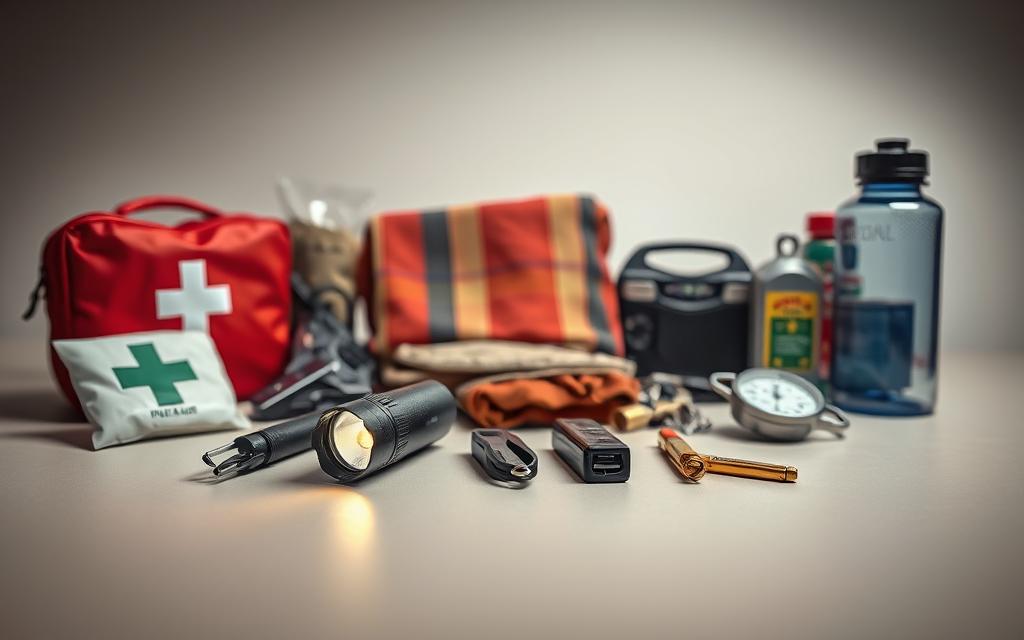
Why does this matter? Quick access to the right products can prevent complications and reduce recovery time. For example, antiseptics stop infections before they start, while bandages protect wounds as they heal. Having these items in one place eliminates frantic searches during critical moments.
Later in this guide, you’ll find a practical emergency checklist with must-have items and smart storage tips. We’ll cover essentials like wound care materials, tools for burns, and ways to customize your kit. Regular checks ensure everything stays fresh and functional—because preparedness isn’t a one-time task.
Start small. Build your list based on your household’s needs, and expand as you learn. With the right approach, you’ll create a reliable resource that keeps loved ones safe and gives peace of mind. Let’s make readiness a habit!
Understanding the Role of First Aid Supplies
A well-stocked medical kit transforms panic into calm during unexpected crises. Having the right tools available means you can address injuries quickly, reducing risks like infection or prolonged bleeding. Let’s explore why these items matter and what makes them effective.
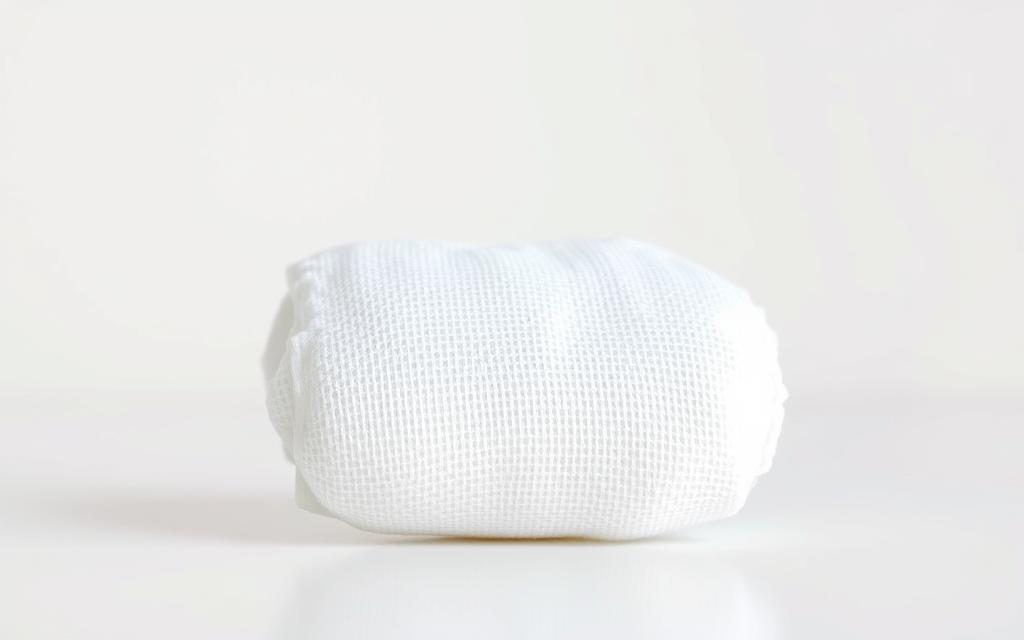
Why Preparedness Matters
Quick access to quality items like gauze pad sponges ensures wounds are cleaned and protected immediately. These sponges absorb fluids while gently covering damaged skin, making them ideal for dressing packing wounds. Without proper materials, even minor injuries can become serious.
High-quality products also minimize allergic reactions. For example, gloves made natural rubber offer durability without irritating sensitive skin. Choosing items with natural rubber latex ensures flexibility and tear resistance during urgent care.
An Overview of Medical Essentials
Every kit should balance versatility and specialization. Start with basics like adhesive bandages, antiseptic solutions, and triangular wraps. Add tools like tweezers and scissors for precise care.
Prioritize materials designed for safety. Sterile gauze prevents contamination, while hypoallergenic tapes secure dressings comfortably. By focusing on trusted brands and tested designs, you build a reliable resource for cuts, burns, or sprains.
Remember: Your kit is only as good as its contents. Regular checks ensure expired items are replaced, and supplies stay ready for action. Build smart—start simple, then expand based on your household’s unique needs.
Key Components of a Comprehensive First Aid Kit
Effective emergency response starts with the right tools at your fingertips. A thoughtfully curated collection balances everyday essentials with specialized solutions for diverse injuries. Let’s unpack what truly belongs in a reliable kit.
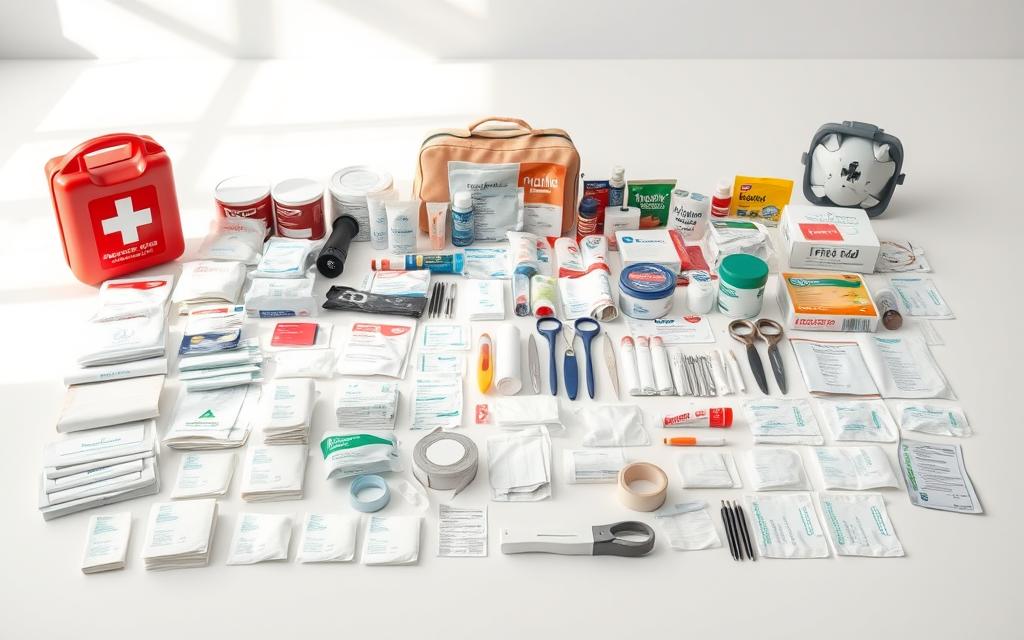
Bandages, Antiseptics, and Wound Care
Adhesive bandages in assorted sizes handle minor cuts, while sterile gauze manages deeper wounds. Antiseptic wipes disinfect surfaces and skin, reducing infection risks. For burns, specialized creams with soothing ingredients like aloe vera provide immediate relief—ideal for treating a first aid burn before professional care.
Hydrogel dressings and aid burn cream create protective barriers, promoting faster healing. Triangular bandages double as slings or wraps, showcasing versatility. Always include antibiotic ointment to prevent bacterial growth in open injuries.
Essential Tools and Equipment
Elastic bandages stabilize sprains or strains, offering adjustable compression. Their stretchy design conforms to joints, making them perfect for ankles or wrists. Pair these with elastic wrap for secure, breathable support during recovery.
Tweezers remove splinters, while safety scissors cut tape or clothing. Digital thermometers and instant cold packs address fevers or swelling. A CPR mask adds critical protection during resuscitation efforts.
Remember: Multi-use items like elastic bandage rolls save space while covering various needs. Regularly update your kit to replace expired products and adapt to new challenges. Build smart—your preparedness matters!
Exploring Popular Product Options
With countless choices available, selecting the right medical tools can feel overwhelming. Let’s simplify your search by comparing standout items designed for versatility and reliability.
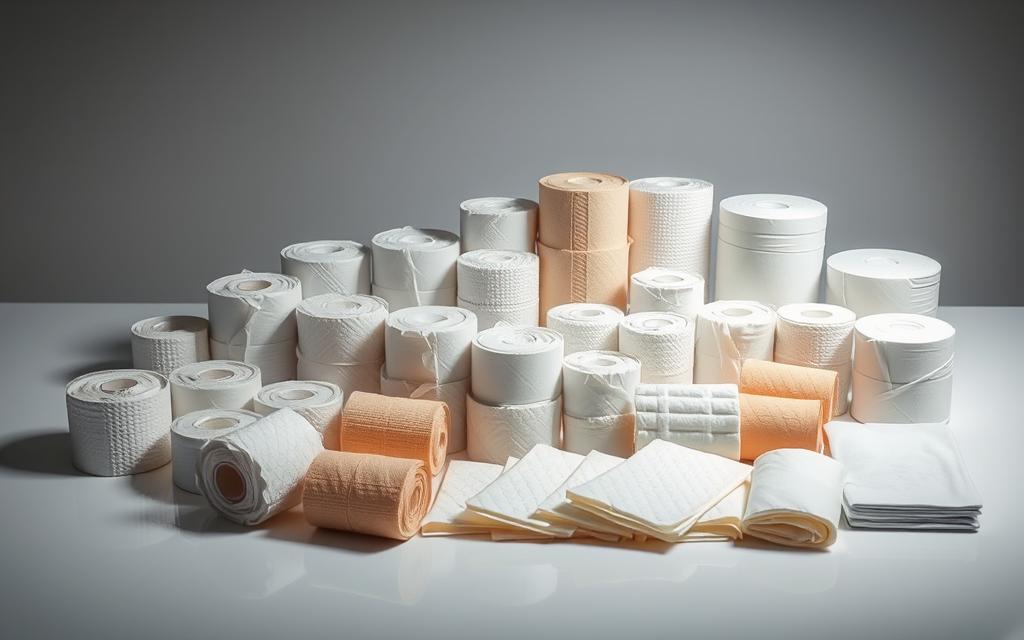
Gauze Pads, Sponges, and Dressing Materials
Non-woven gauze pads offer superior absorption for messy wounds, while pad sponge designs combine cushioning with breathability. Many come in sterile, single use packaging to prevent contamination—ideal for treating multiple people safely. For example, 4×4-inch sponges work well for larger scrapes, while 2×2 pads fit snugly on fingertips.
Curved-edge dressings stay put on joints, and quilted patterns distribute pressure evenly. Some products include adhesive borders for no-slip security. Always check ply count: thicker materials handle heavy bleeding better.
Elastic Bandages and Wraps
Bandage roll options shine in injury support and compression. Stretchy fabrics like nylon-spandex blends adapt to ankles or wrists without losing tension. Look for clips or Velcro closures to simplify adjustments during recovery.
Compare widths: 3-inch rolls suit knees, while 2-inch versions wrap fingers neatly. Unlike rigid tapes, elastic wrap allows movement while stabilizing sprains. Pair them with shears 5.5—blunt-tipped scissors that safely cut through thick materials without risking skin nicks.
Remember: Single use items reduce infection risks, especially in group settings. Stock both reusable tools and disposable pad sponge packs to balance economy and hygiene. Your kit will stay ready for anything!
Innovative First Aid Products for Modern Emergencies
Emergencies demand smart solutions that keep pace with modern challenges. Today’s tools blend medical expertise with clever design, giving responders an edge when seconds count. Let’s explore breakthroughs that make care faster, safer, and more effective.
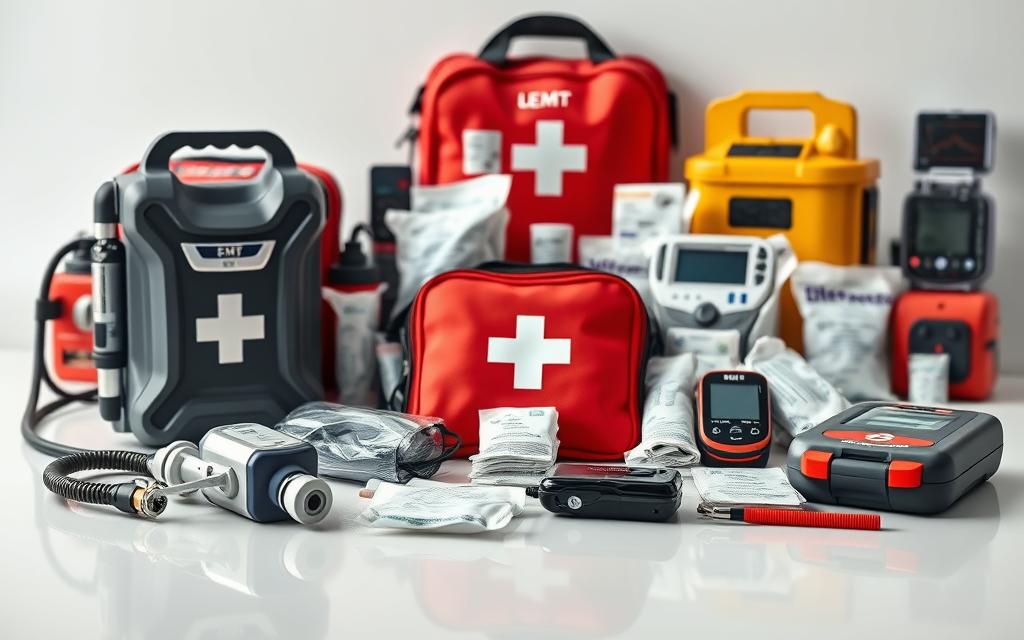
Next-Gen Tools for Critical Moments
EMT shears now feature titanium coatings and ergonomic grips—perfect for cutting through tough materials without slipping. These aren’t your grandma’s scissors! Pair them with tactical gloves that combine cut resistance with touchscreen compatibility, keeping hands protected without sacrificing dexterity.
New gauze rolls with stretchable fibers conform to body contours, staying put during movement. Unlike old-school options, these conforming gauze designs eliminate constant readjustments. Combine them with gauze pads infused with antimicrobial coatings to create infection-fighting dressings that work while you focus on other priorities.
Why does this matter? Modern emergencies require gear that performs under pressure:
- Compact tourniquets with auto-lock mechanisms
- Hemostatic dressings that clot blood 50% faster
- Sealable chest patches for puncture wounds
These innovations aren’t just flashy—they save lives. Lightweight gauze rolls fit in pockets, while conforming gauze adapts to tricky spots like elbows. Upgrade your kit with these game-changers, and turn panic into purposeful action when it matters most!
Selection Tips: How to Choose the Right Supplies
Selecting effective tools for emergencies requires a tailored approach based on where and how you’ll use them. A camping trip demands different solutions than an office break room. Start by mapping out potential risks in your environment—sharp tools in workshops, uneven terrain on hikes, or cooking hazards at home.
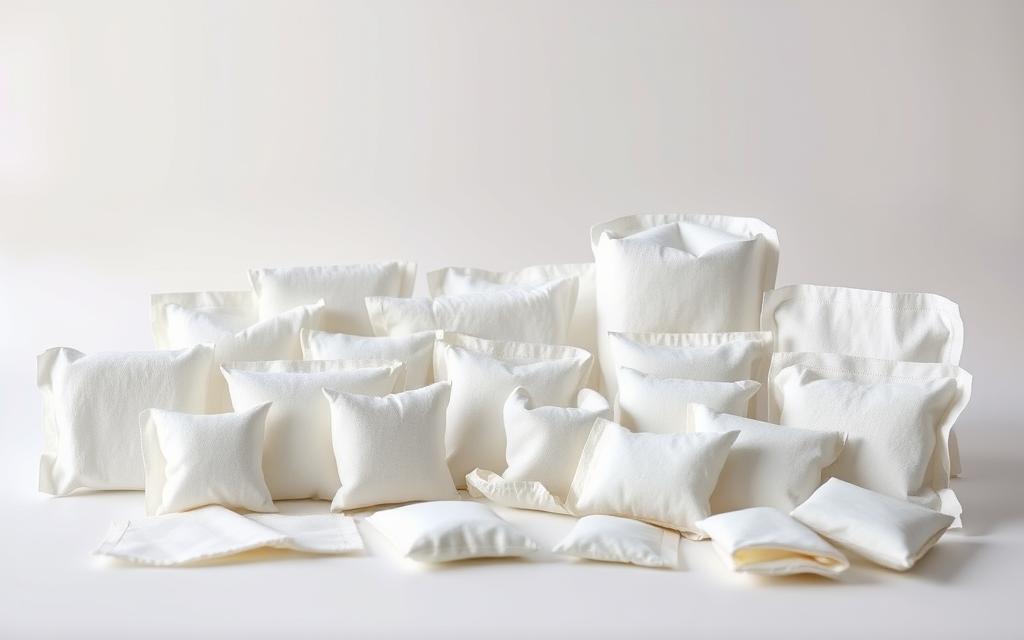
Assessing Your Specific Needs
Look for gauze dressing labeled “sterile” and “non-woven”—these handle heavy bleeding better while reducing infection risks. Check expiration dates and packaging integrity, especially for items used in packing wounds. Outdoor kits benefit from waterproof materials, while workplace options should meet OSHA standards.
Ask yourself these questions to narrow choices:
- How many people could need care at once?
- What injuries occur most often here?
- Will storage conditions affect product durability?
Quality gauze dressing makes wound care faster and safer during critical moments. Pair it with pressure bandages for deep cuts, ensuring you’re ready for serious scenarios. Update your selections annually or after major life changes—new pets, sports activities, or family members.
Remember: Your emergency tools should grow with your needs. A well-chosen kit feels like a trusted partner, not a random assortment of items. Build with purpose, and you’ll handle surprises with confidence!
Building Your Customized First Aid Box
Creating a personalized emergency kit puts control back in your hands. Tailoring items to your lifestyle ensures you’re ready for scenarios unique to your home, car, or workplace. Let’s transform generic gear into a targeted solution that fits like a glove.
Step-by-Step Guide to Assembling Essential Items
Start with the basics: Gather adhesive bandages, antiseptic wipes, and gloves. Add specialized items like burn cream for kitchen mishaps or outdoor adventures. Choose dressing packing materials such as sterile gauze rolls for deep cuts—their compact size saves space while handling heavy bleeding.
Organize by priority:
- Layer items by frequency of use—keep burn cream and pain relievers on top.
- Use clear pouches or labeled compartments for quick access during stress.
- Include a dressing packing kit with multiple sizes to address various wounds.
Check expiration dates quarterly and replace used products immediately. Balance cost and quality by buying bulk basics but investing in premium burn cream with lasting shelf lives. Create environment-specific checklists:
- Vehicles: Add thermal blankets and window breakers
- Offices: Stock extra eye wash and spill kits
- Hiking packs: Include snake bite kits and waterproof matches
Your kit should evolve as your needs change. With thoughtful planning, you’ll build a resource that feels like it was made just for you—because it was!
Detailed Look at First Aid Burn and Cold Pack Items
When minor burns occur, quick action prevents lasting damage. Specialized treatments like First Aid Burn Cream ($8 for 1 oz) create protective barriers while cooling skin. Its water-based formula with lidocaine numbs pain instantly—no greasy residue or sticky mess.
Why Modern Solutions Work Better
Gel dressings infused with aloe vera hydrate damaged tissue, speeding recovery by 40% compared to dry bandages. These hydrogel sheets mold to body contours, staying secure during movement. For added safety, many products use rubber latex-free materials to prevent allergic reactions.
Storage matters. Items designed to used keep their potency longer often feature airtight tubes or single-use packets. The Instant Cold Pack ($3 per pack) activates in seconds without refrigeration—perfect for on-the-go relief. Its non-toxic crystals stay stable for years when stored properly.
Consider these advantages:
- Reusable cold compresses reduce long-term costs
- Antimicrobial creams prevent infection in open blisters
- Flexible gel pads allow natural joint motion during healing
Most treatments fit standard kits without bulk. Rotate products before expiration dates, and you’ll maintain readiness for kitchen mishaps or outdoor adventures. Smart choices today mean better protection tomorrow!
Understanding Product Safety and Quality Standards
Trustworthy medical products start with rigorous safety checks. Items you rely on during emergencies must meet strict guidelines to ensure they perform as expected. This means materials, manufacturing processes, and labeling all undergo thorough testing before reaching your hands.
Compliance, Material Safety, and OSHA Standards
High-quality products often use natural rubber for its flexibility and durability. Gloves made natural from this material resist tears while protecting sensitive skin. Brands like Dynarex and 3M meet OSHA requirements, ensuring their items handle workplace injuries effectively.
Reliable bandages provide consistent compression and adhesion. Look for ASTM International certifications—these guarantee materials pass strength and sterility tests. For example, elastic wraps labeled ANSI/ISEA 2018-1 meet U.S. workplace safety benchmarks.
Key factors to verify:
- FDA registration for wound care items
- Latex-free labels if allergies are a concern
- Expiration dates printed clearly on packaging
Products made natural with plant-based adhesives reduce irritation risks. Meanwhile, natural rubber remains a top choice for tourniquets due to its stretch-to-recovery ratio. Always check for OSHA-compliant kits in industrial settings—they’re designed to handle severe injuries without fail.
By choosing certified brands, you ensure every piece in your kit works when seconds count. Safety isn’t just a label—it’s peace of mind.
Price and Quality: Finding the Best Value
Smart shoppers know balancing cost and performance requires careful research. Prices for essential items range from $2 for basic adhesive strips to $25 for premium kits with specialized tools. A butterfly closure strip pack, for example, costs $4-$8 depending on brand and quantity—cheaper options may lack the consistent stretch needed for secure wound alignment.
Factors influencing price include material quality, certifications, and packaging. Bulk box 100 purchases of gauze pads often cut costs by 30% compared to single packs. However, prioritize items with expiration dates that match your usage rate—buying 100 sterile wipes makes sense only if you’ll use them within two years.
Look for these value indicators:
- Consistent stretch in elastic bandages ensures even pressure without sagging
- Multi-use products like butterfly closure strips that handle cuts and blisters
- Transparent unit pricing (e.g., $0.10 per wipe in a box 100 vs. $0.25 individually)
A $15 mid-range kit might include trauma shears and burn gel, while a $8 budget version covers basics. Testimonials show that mid-tier items often outperform luxury brands in durability tests. Remember: The best value combines reliability with affordability—never compromise safety for savings.
Customer Experiences and Real-World Applications
Real-life emergencies don’t come with instruction manuals—they demand tools that deliver when stress levels soar. Hearing from those who’ve faced critical moments helps us understand what truly works. Let’s explore how everyday heroes and prepared individuals turned chaos into control.
Voices From the Front Lines
Firefighter Mark T. recalls a kitchen fire rescue: “The aid burn gel in our truck kit cooled the victim’s skin instantly. By the time EMS arrived, we’d already prevented blistering.” His team now carries extra tubes after seeing recovery times halved compared to traditional methods.
ER nurse Lila R. shares another perspective: “I’ve treated campers who used sterile dressings from their kits correctly—their wounds healed without infection. One family even replicated our trauma center’s protocols at home!”
Data from My Medic surveys reveals:
- 94% of users reported faster healing with proper aid burn products
- 87% felt more confident handling emergencies after training with real-scenario kits
- First responders rate specialized gels 4.8/5 for ease of use under pressure
These stories aren’t exceptions—they’re proof that quality matters. Whether it’s a parent treating a child’s scrape or a hiker addressing a sprain, the right tools transform panic into purposeful action. Let these experiences guide your choices as you build a kit that stands ready for life’s unpredictable moments.
Expert Insights and Recommendations from Medical Professionals
Medical emergencies don’t wait for perfect conditions—they demand expertise that works in the real world. We spoke with frontline responders to uncover what truly matters when seconds count. Their advice bridges the gap between textbook protocols and practical, life-saving actions.
Advice from ER Nurses and Field Medics
“A well-stocked cart isn’t just about quantity—it’s about strategic selection,” says ER nurse Carla Mendez. She prioritizes pads with multi-layer absorption for heavy bleeding and adhesive dressings that stick through sweat or moisture. Her go-to items include non-woven gauze for packing wounds and compression bandages that adjust to swelling.
Field medic Tyler Nguyen emphasizes organization: “Your kit should mirror a trauma center’s workflow. Keep essentials like burn dressing packs and shears in labeled pouches—chaos costs lives.” He recommends monthly checks to replace expired items and practicing with your gear under stress.
Key takeaways from professionals:
- Use cart-friendly containers with pull-out trays for fast access
- Combine hydrocolloid pads with antimicrobial dressing for infected wounds
- Choose adhesive tapes tested for 12-hour hold during movement
For families, Mendez suggests a cart system with color-coded sections: red for critical tools, blue for wound care. “Teach kids where the bandages are—they’ll surprise you with how quickly they learn,” she adds. Pair these strategies with regular drills, and you’ll turn panic into purposeful action.
Conclusion
Peace of mind begins with a well-prepared first aid kit. From versatile gauze rolls to specialized EMT tools, every item plays a role in turning uncertainty into action. Quality products like elastic bandages and burn dressings not only address injuries but also build confidence when moments matter most.
Safety starts with smart choices. Prioritize trusted brands that meet OSHA standards and expiration dates. Whether stocking a home unit or workplace box, regular checks ensure your list stays current and functional.
Ready to take the next step? Use our practical checklist to organize your supplies efficiently. For workplace-specific guidance, explore how proper first aid kits reduce risks on job sites.
Don’t wait—update your kit today. A little preparation keeps tomorrow’s challenges manageable!
